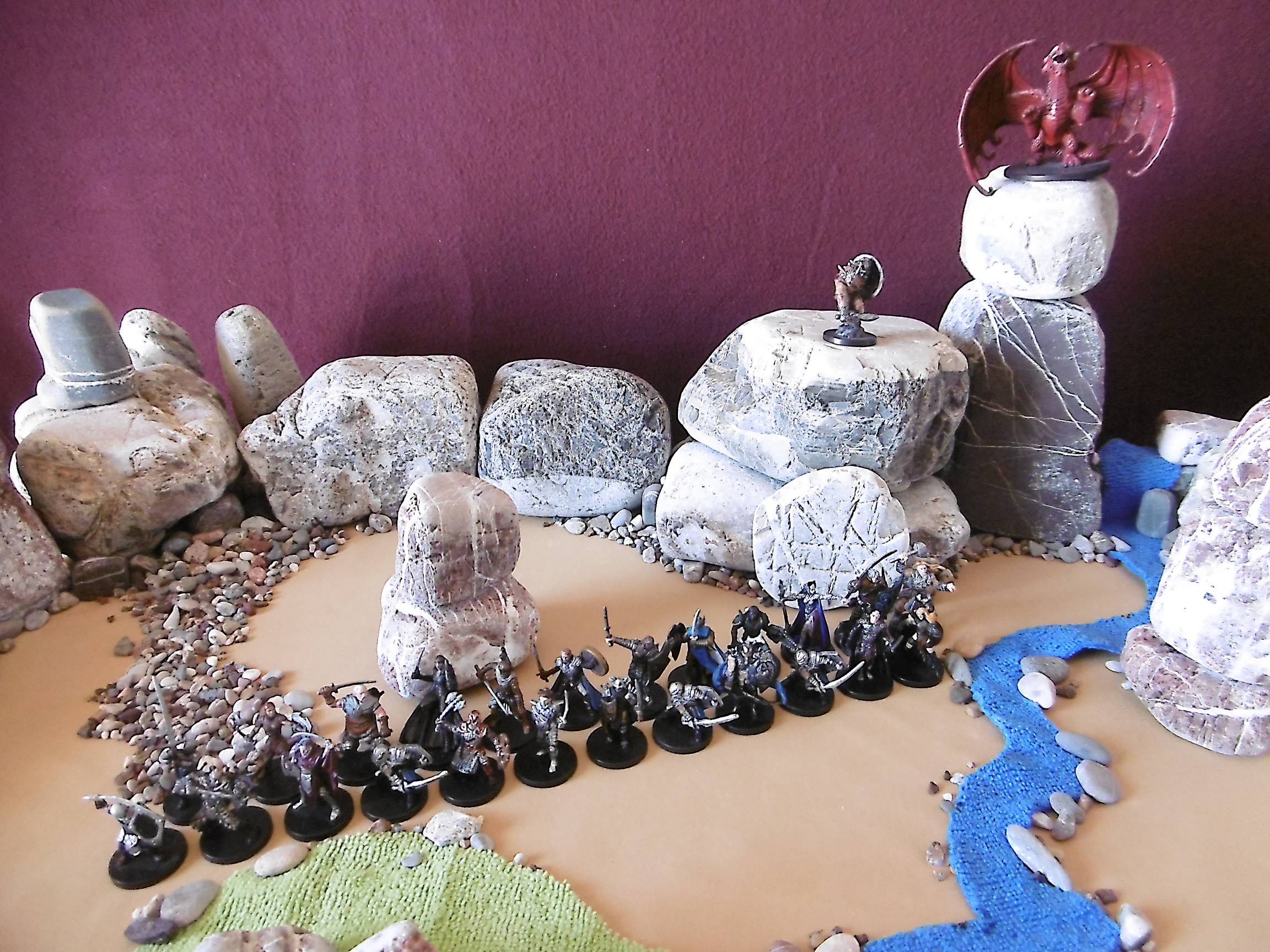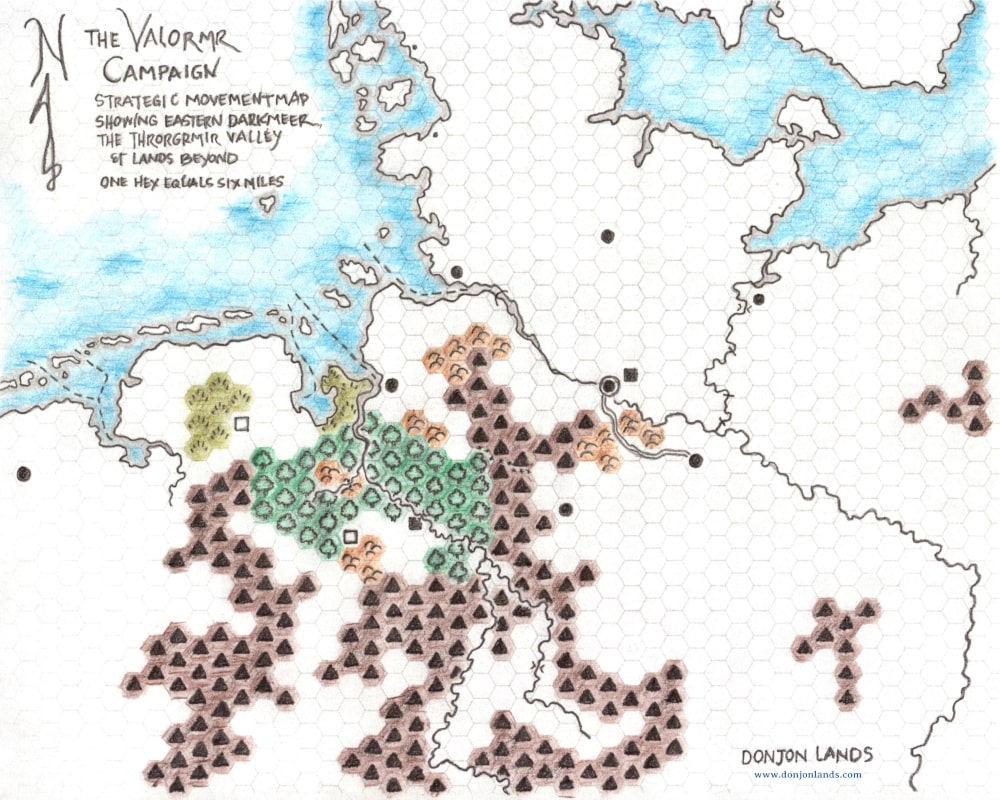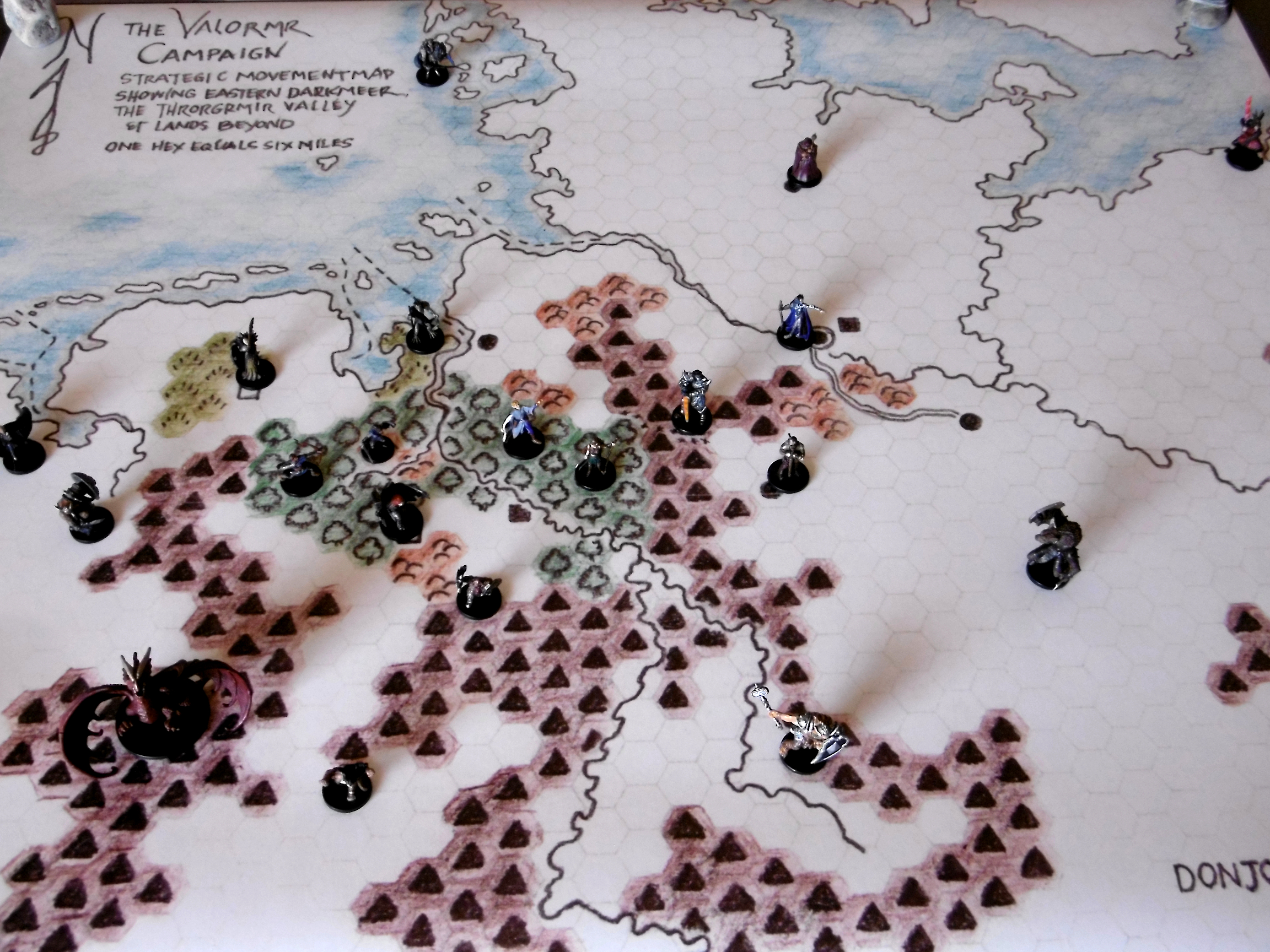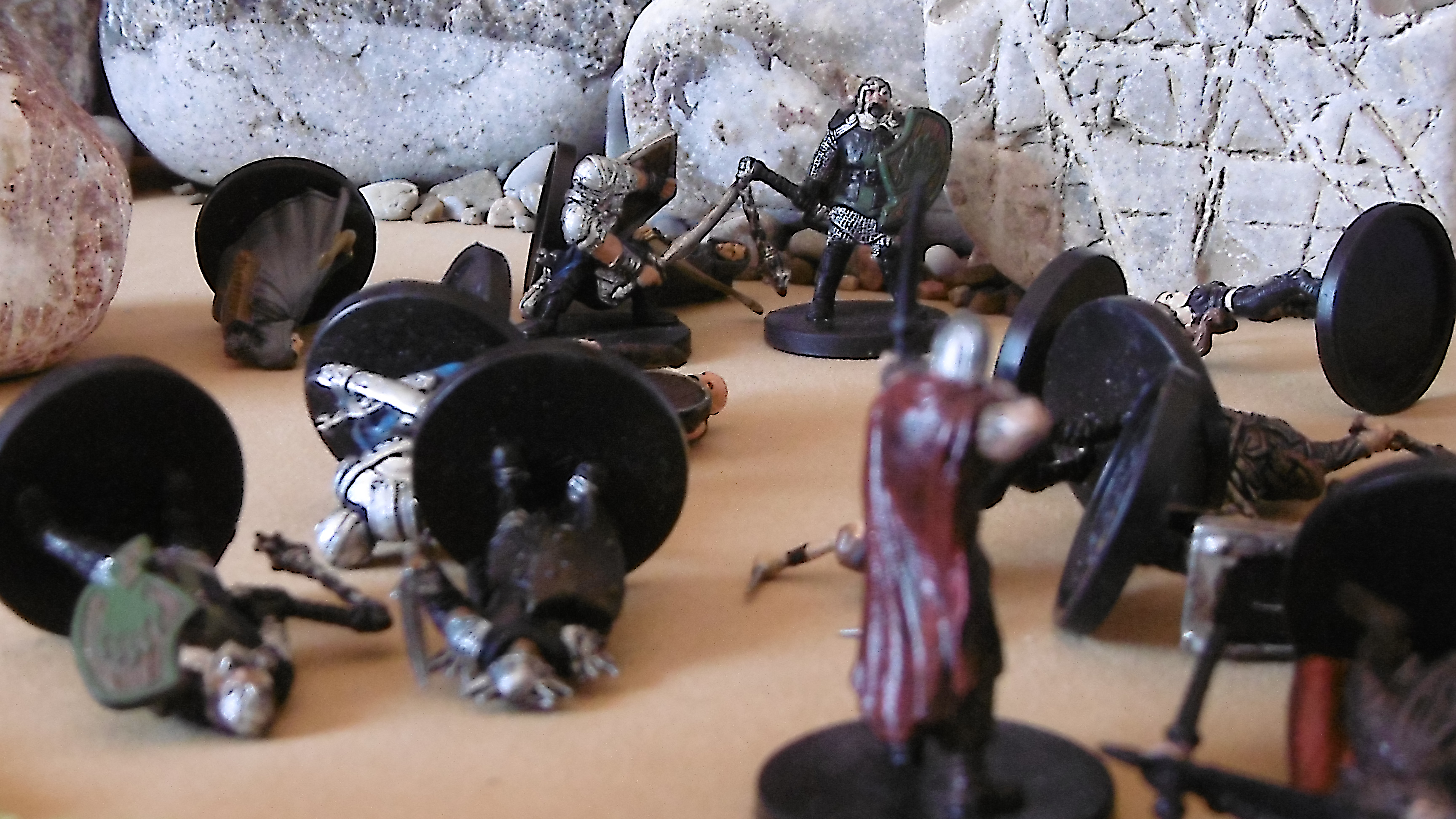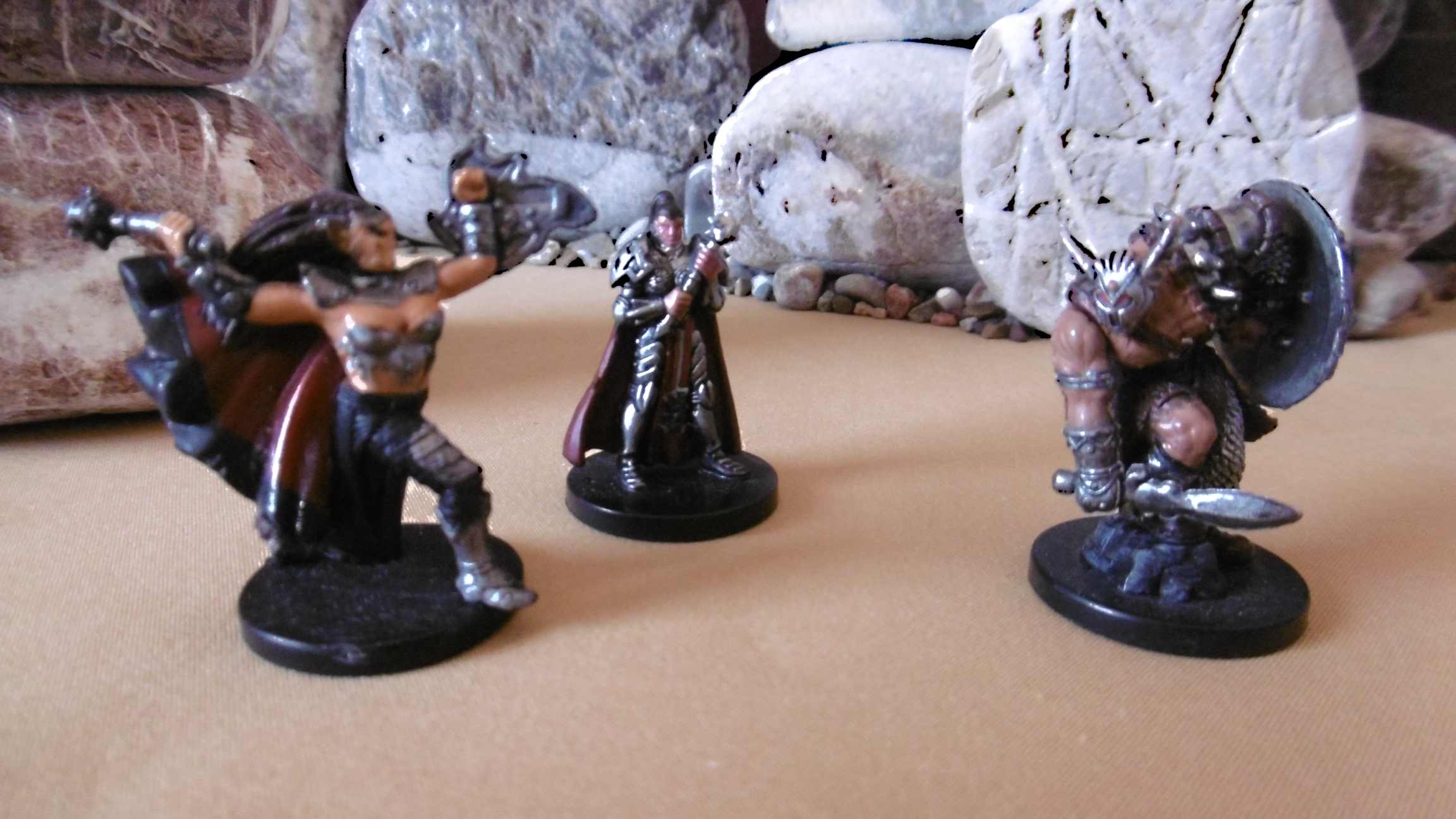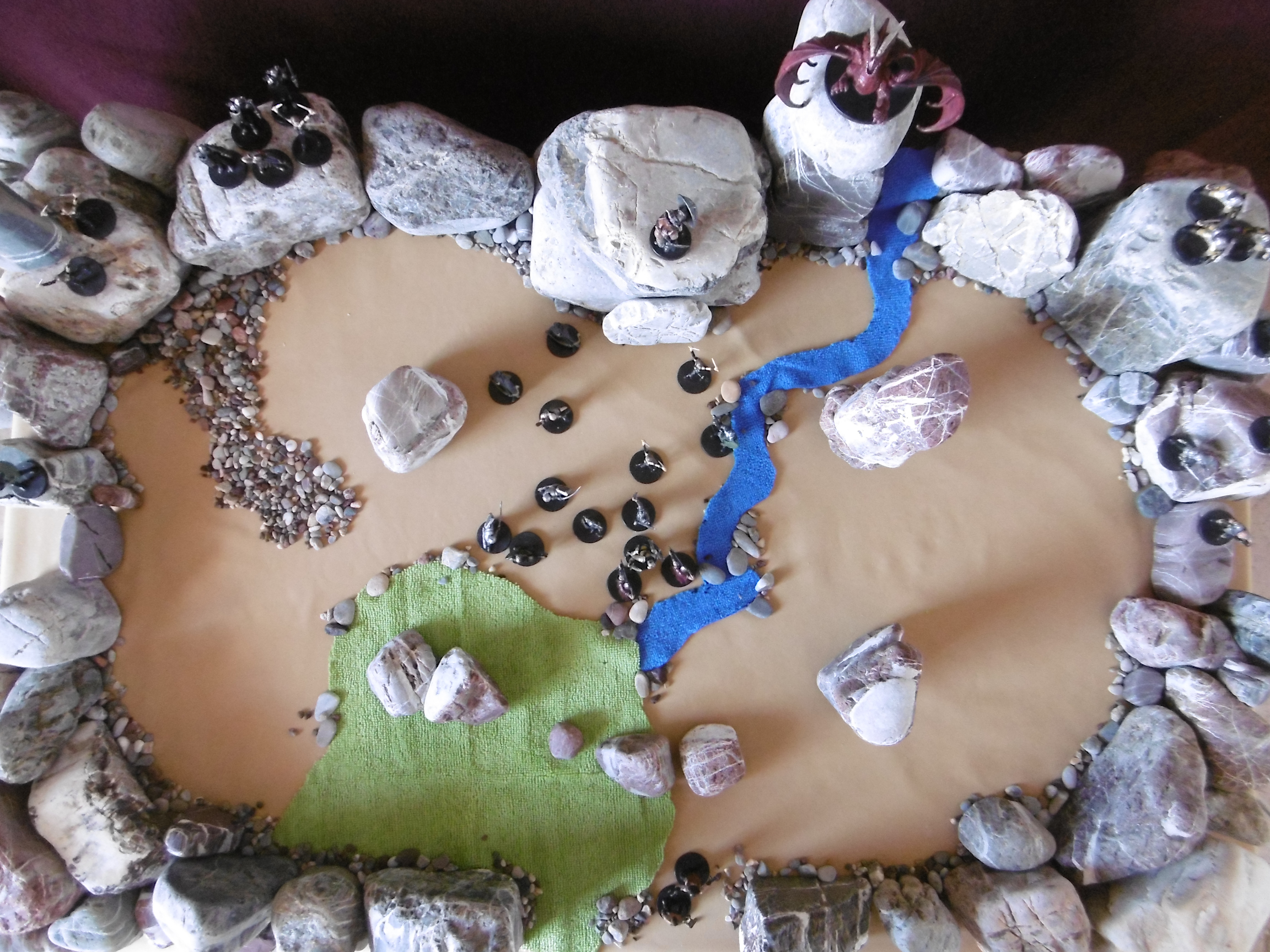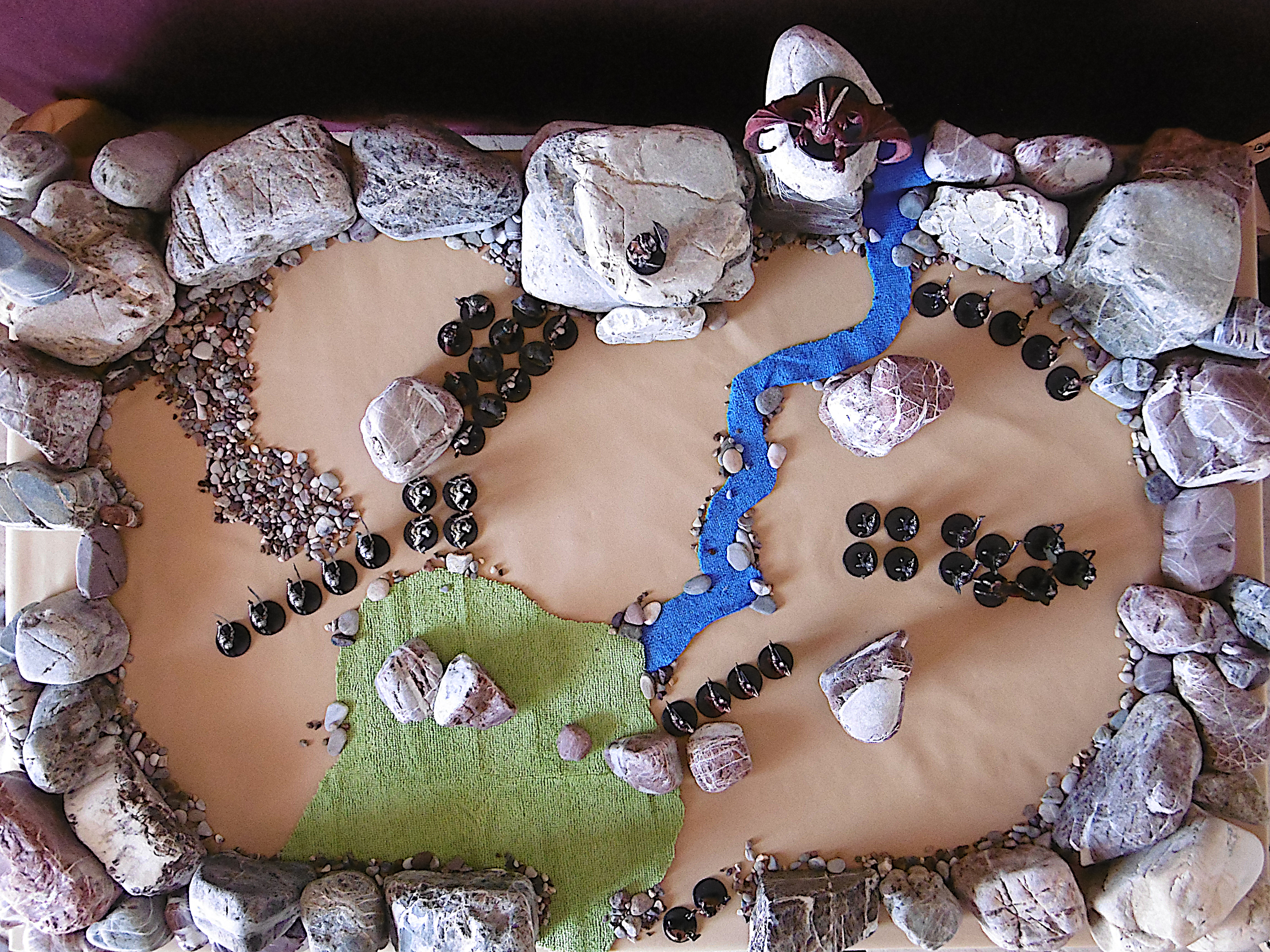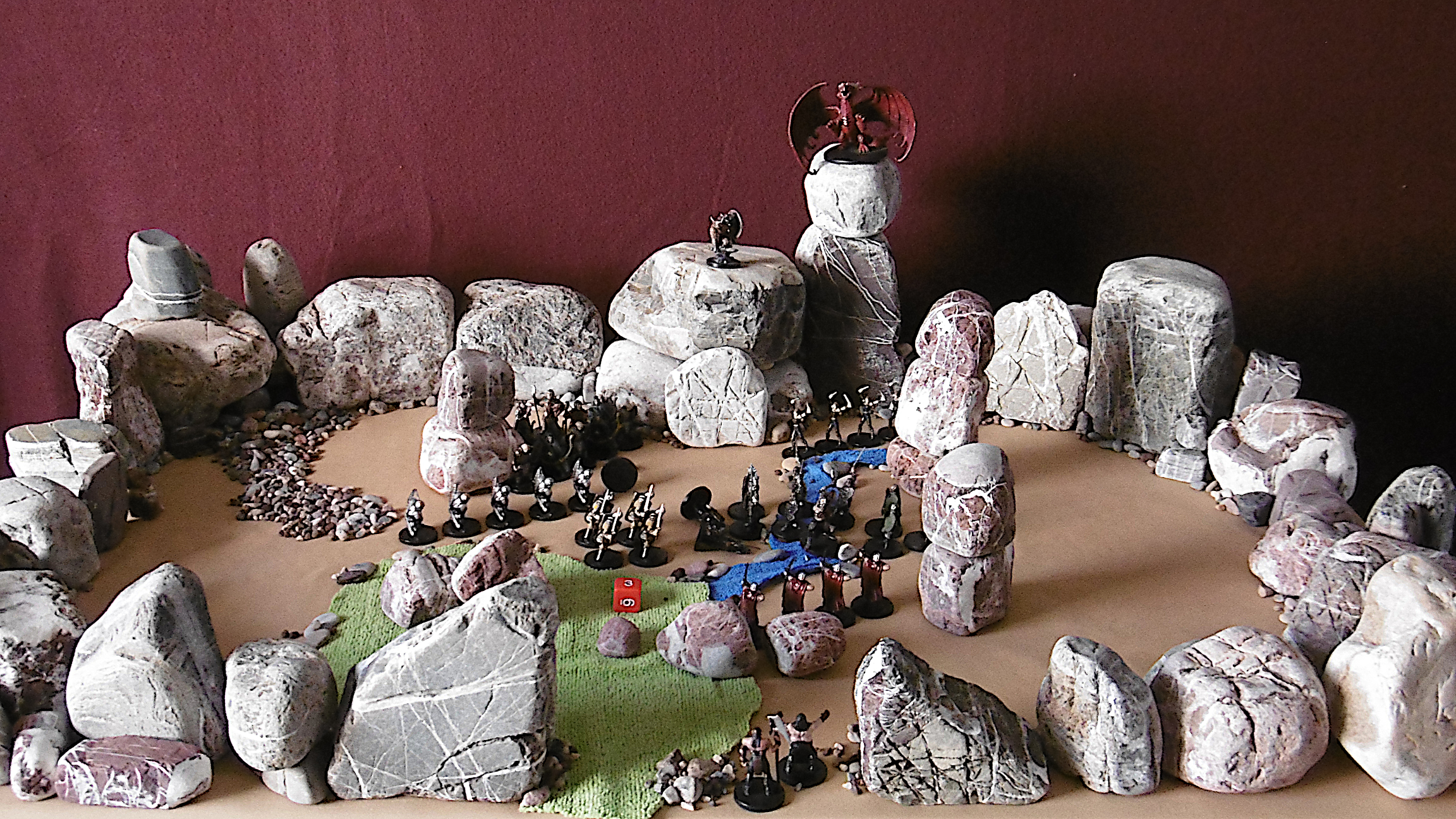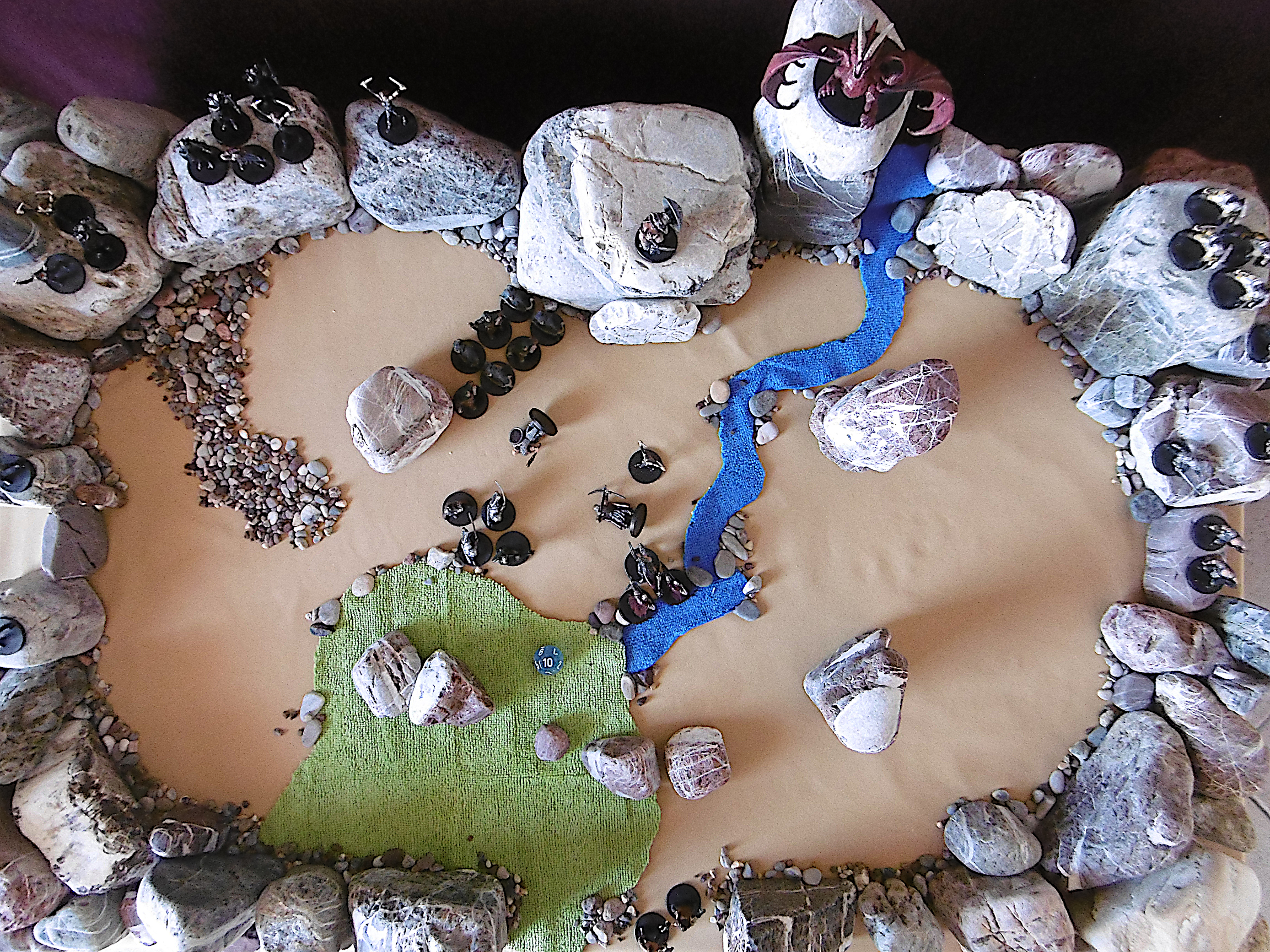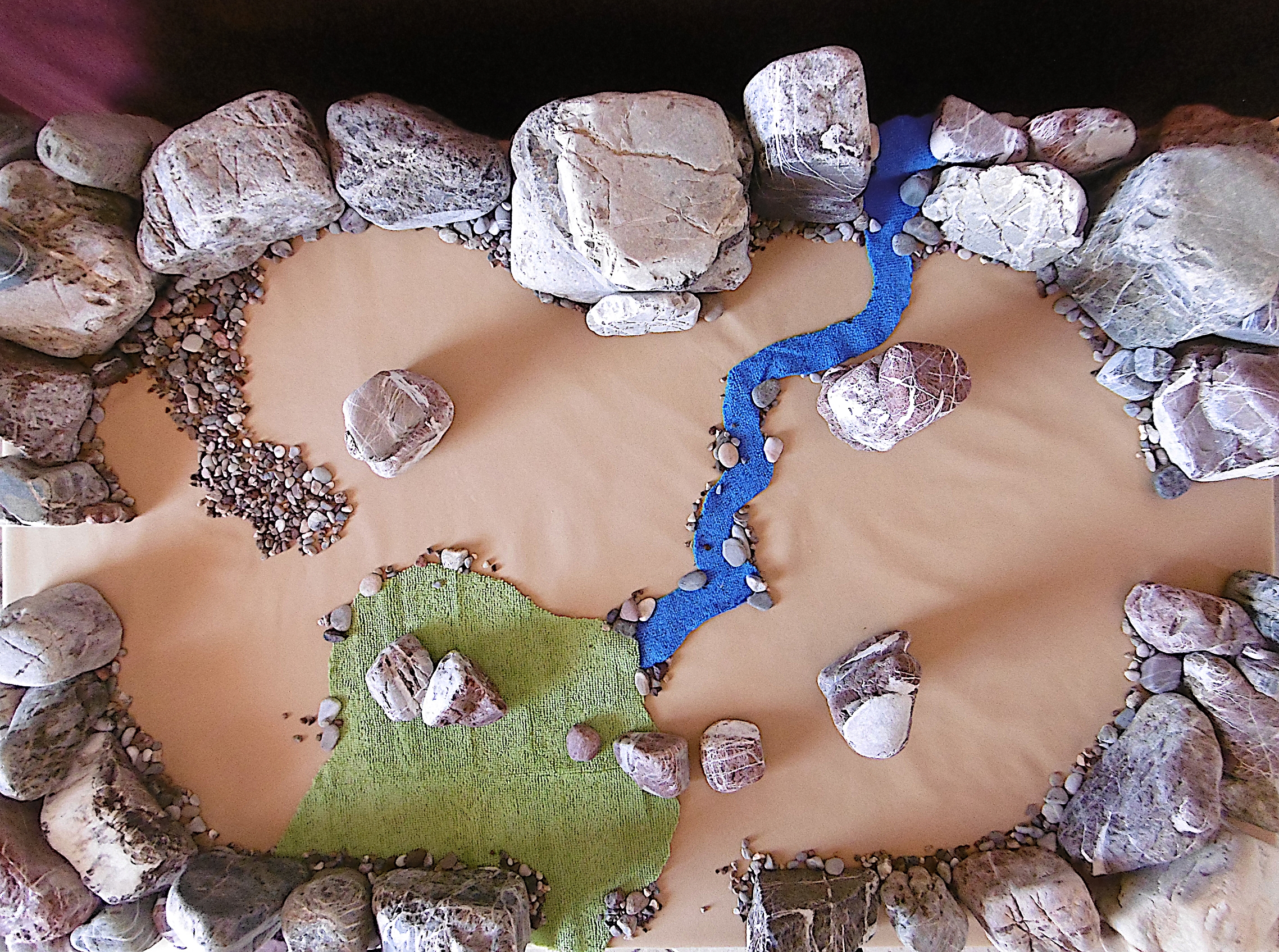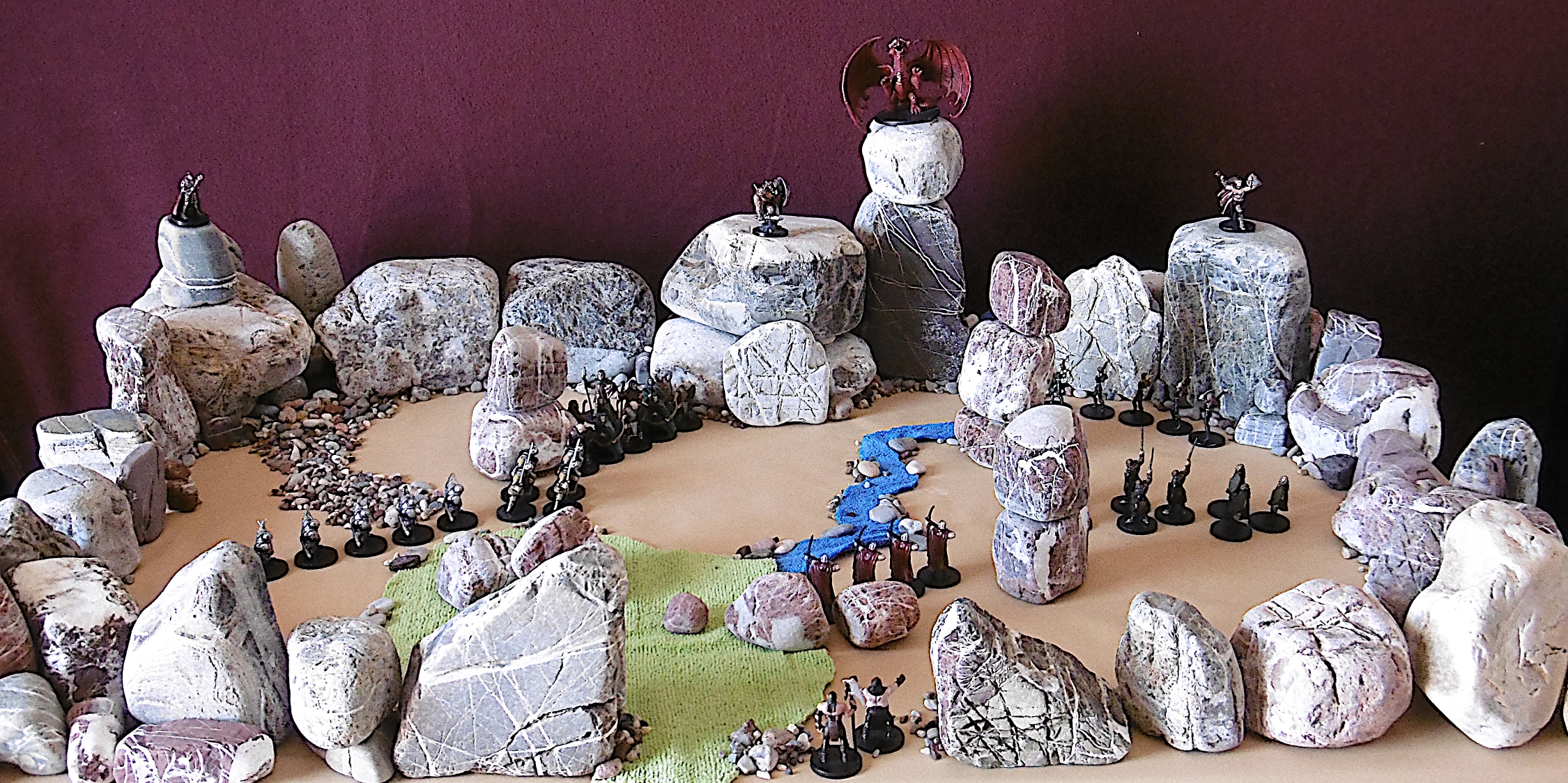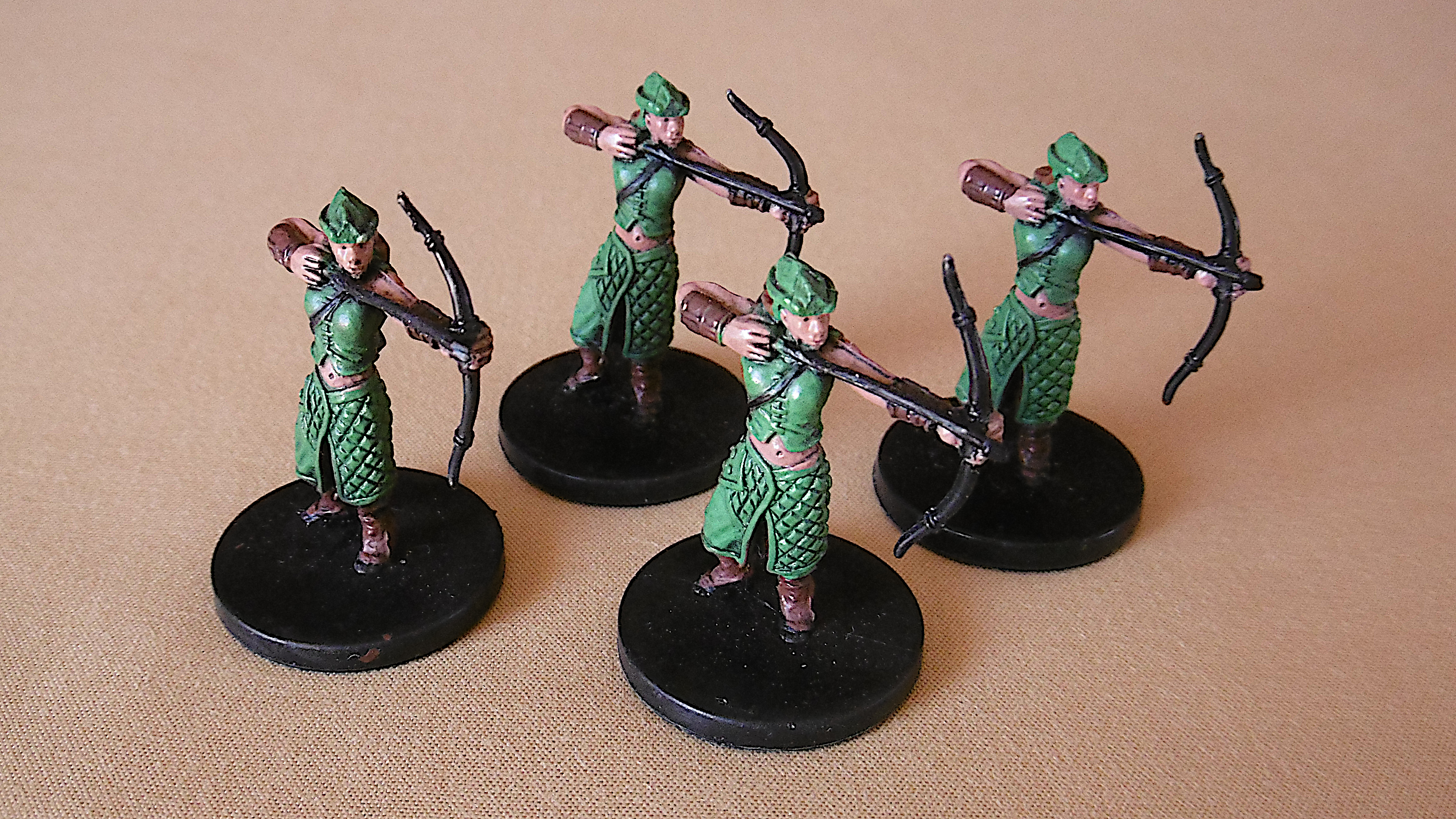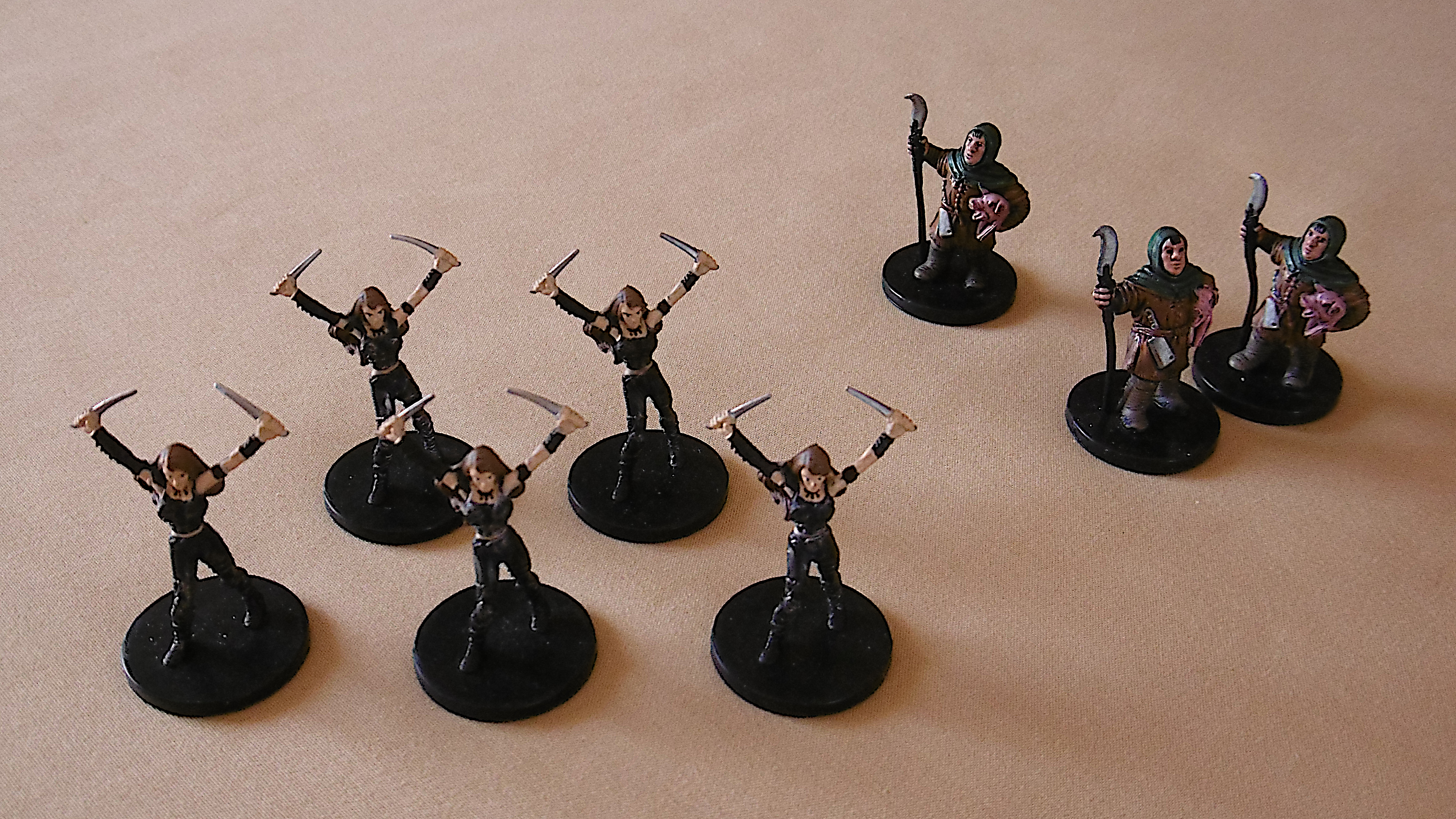Strategy on the Jousting Matrix
“Jousting in Chainmail is like playing rock-paper-scissors.”
The analogy is as oft cited as apt. In Chainmail (3rd ed., Tactical Studies Rules, 1975), opposing knights each choose, in secret, an aiming point and a defensive position. Each aiming point is then compared against the other’s defensive position on the Jousting Matrix to determine results of one “ride.”

Results range from a miss to breaking a lance to being injured or unhorsed. Based on the results, points are awarded for each ride. Unless one is unhorsed, the knight with the most points at the end of three rides is declared the winner, awarded the laurels, and gets his or her dance partner of choice at the after party.
Playing the hand game, probabilities for a win, loss, or tie are exactly equal. Your choice of three forms—rock, paper, or scissors—versus your opponent’s choice is either weaker, stronger, or equally matched.
Winning at Even Odds
Deprived of any rationale, strategies for winning rock-paper-scissors often involve being quick—watching the opponent’s hand to see what shape is forming, sneaky—waiting till the last possible instant to form your own shape, or tricky—calling out one shape just prior to forming another. These are denied us in Chainmail jousting, where we write our choice of aiming point and defensive position on a hidden sheet—outside of learning the rhythm of your opponent’s pen marks on a hard table, which is sneaky.
For more complexity, we might play rock-paper-scissors-Spock-lizard, which adds two more choices. Since each choice defeats half the remaining choices, no one is superior to another. Five choices does, though, reduce the odds of a tie to one-in-five.
The French play the game with four choices. In pierre-papier-ciseaux-puits, the rock and scissors fall into the well (puits), while the paper covers it as well as the rock. Here we have two options that outperform the others, which gets closer to jousting in Chainmail.
But Chainmail jousting is different from all those. Instead of one choice, each player in a joust has two: the attack (aiming point) and the defense (defensive position). But this only doubles the complexity, effectively playing the same game twice at one go—once as attacker, once as defender—without necessarily reducing the chance for a tie. Although we’ll see that a draw in Chainmail jousting is improbable.
Where Chainmail differs from the hand games is in the options. Instead of three, four, or five, each player has eight options for the attack and six for the defense. This, again, only complicates the matter, though by magnitudes.
“Results can vary from both opponents missing to both being unhorsed, as a study of the Jousting Matrix will reveal” (26).
To figure any strategy out of the Jousting Matrix, our study must go further than the range of results. More careful examination shows the attack options differ in their probability of success and limit the attacker’s possible defense options. As well, the defense options have differing probabilities of success. One successful defense result, “B,” ensures a favorable end to the joust in the next ride. A frequent occurrence, a “B” also subtracts 1 point from the attackers score, making a tie unlikely, though not impossible, in even a single ride. At this point, we see that the analogy is less apt, even if it isn’t entirely inapplicable either.
At this point, we see that the analogy is less apt, even if it isn’t entirely inapplicable either.
Evaluating Options
Point System
To evaluate the strength of each attack and defense, we use a simple point system.
| Result | Points |
|---|---|
| (U)nhorsed | 1 |
| (H)elm Knocked Off | ½ |
| (B)reaks Lance (without unhorsing) | −½ |
Miss and Glance Off results are equivalent: no effects, no points. A glancing blow only lends dramatic effect.
We give and take ½ point for Helm Knocked Off and Breaks Lance, because once either is accomplished, the next ride ends in an Unhorsing. For if a defender’s helm is knocked off or an attacker’s lance breaks, he or she must take a Steady Seat the next ride. Knowing this, the opponent aims FP. The other can only hope to achieve an unhorsing as well.
Because a Breaks Lance with Unhorsed (B/U) result penalizes the attacker only 1 point while it wins the joust, we don’t subtract any points in the evaluation system when they occur together. Similarly, the Injured result with Unhorsed (U/I) awards extra points to the attacker but does not impact our assessment. We use these results—and the combination B/U/I—to break any ties in the evaluation.
| Defensive Positions | |||||||
|---|---|---|---|---|---|---|---|
| Aiming Point | Lower Helm | Lean Left | Lean Right | Steady Seat | Shield High | Shield Low | Total |
| Helm | +½ | +1 | +1½ | ||||
| DC | +1 | −½ | −½ | −½ | −½ | ||
| CP | +1 | +1 | −½ | +1 | +1 | +3½ | |
| SC | −½ | +1 | +½ | ||||
| DF | −½ | +1 | −½ | −½ | −½ | ||
| FP | +1 | −½ | +1 | +1 | −½ | +2 | |
| SF | +1 | +1 | |||||
| Base | −½ | +1 | −½ | +1 | −½ | +½ | |
| Total | +2 | +1½ | +1 | −½ | +3½ | +½ | |
Aiming Points
Counting up the total points for each attack reveals the optimal aiming points assuming random defensive positions.
| Aiming Point | Score |
|---|---|
| CP | +3½ |
| FP | +2 |
| Helm | +1½ |
| SF | +1 |
| SC | +½ |
| Base | +½ |
| DC | −½ |
| DF | −½ |
The tie between SC and Base might be broken in favor of Base due to the extra points for an Injury versus Shield High. We’ll see below, however, that Shield High ranks low on the defensive positions list, so the Injury is unlikely. More likely is the Breaks Lance result, which comes up three times when aiming at Base versus only once at SC.
The tie between DC and DF is broken by a lance which suffers in the later case against the Lean Right position.
“Aim pale; avoid dexter.”
This might be part of initial jousting instruction. For we see that CP is by far the best aiming point, with FP coming in second. While DC and DF are the worst.
Defensive Positions
To evaluate each defense, we apply the same point system. In defense, the lower score is better.
| Defensive Position | Score |
|---|---|
| Steady Seat | −½ |
| Shield Low | +½ |
| Lean Right | +1 |
| Lean Left | +1½ |
| Lower Helm | +2 |
| Shield High | +3½ |
“Steady in the seat; don’t raise the shield.”
Steady Seat is the best defensive position, with Shield Low next. Lower Helm ranks above Shield High, which is by far the worst defensive position. In the best case, your opponent Breaks Lance against Shield High, but only when aiming DC. Plus, we see above that dexter is not a favorable side for the aim. In the worst case, your opponent aims Base, and you won’t be up for much dancing at the after party.
In Play
Now that we know the best and worst attacks and defenses, we might think it’s that simple and mumble the analogy under our breath as we turn the page to the fantastic parts of the book without first tilting. But unlike rock-paper-scissors, we only experience the interaction of rules and human psychology seated opposite an opponent. In that sense, it’s more like Diplomacy—to exaggerate the point in the opposite direction. We discover its virtues in play.
Simple to Teach and Learn
The rules consist of a few lines of text and the Jousting Matrix, which, once we learn to read it, contains the essentials of play. A few minutes and a couple demonstration rides and we’re off to the lists. Best if each player has a copy of the Matrix before them.
Change It Up
Once the players understand how the game works, it isn’t long until everyone is aware of the best and worst attacks—if that wasn’t the final instruction of their tutelage. Of course, we all use two or three best attacks and defenses. But we have to change it up with middle-ranked options for both from time to time to keep the opponent guessing.
Note Attacks and Defenses
To play, each player makes a secret note of his or her aiming point and defensive position. This done, both players reveal their choices, and results are read from the table.
Know Your Opponent
I recommend keeping a record not only of your own but of your opponent’s aiming points and defensive positions as well. For a single joust of three rides, it probably doesn’t matter as there isn’t much chance for patterns to emerge. But in a jousting tournament, they do, and it’s difficult to see the patterns in memory.
With a quick look at previous rides, you might notice that your opponent favors a particular attack. You might see also that he or she intersperses a second favorite every third ride. Thereby, you gain an advantage.
Know Thyself
Take a look at your own previous choices too. If you see a pattern in your attacks or defenses, your opponent may see it as well. Use any patterns in your opponent’s defense to choose a different aiming point, likewise for the defensive position.
The Jousting Matrix in Fiction
I used the Chainmail Jousting Matrix to add strategy to a fictional jousting scene. In The First Story of Littlelot, the hero must joust against the villain to rescue Gwenevere. If Lancelot wins, Maleagant frees the queen from his tower prison. If Maleagant wins, Lancelot becomes a prisoner too. Those familiar with the Matrix might decipher the knights’ aiming points and defensive positions in each ride. All action in less than two pages, “The Joust” is a quick read.
Range of Results
Examining the Matrix, we see the results of aiming points against defensive positions. In play, we see the myriad combinations of two aiming points and two defensive positions in a series of rides combined with a series of jousts.
May well Gygax and Perren mention the range of results as a selling point. Even in the not infrequent case of a broken lance: We are constrained to a defensive position, certain to be unhorsed in the next ride. In our final effort, should we aim pale to increase our chances to unhorse the opponent as well? Or will she expect that strategy and lean left. In that case, we aim sinister fess… But maybe she’s expecting that too?
The best strategy depends on knowing the opponent. Look for the pattern in your record.
Within a Scenario
As a stand-alone game, Chainmail jousting rejoins the hand games in the list of games you play once and never pick up again. There must be consequences to winning and losing a joust.
Simple stakes are built in to OD&D’s wilderness exploration (Vol. III, 15). If we wander too close to a castle, its lord might challenge us to a joust. Win, and the after party goes on for a month. Lose, and we continue our exploration of hostile territory sans armure.
We might build an entire scenario around a tournament, but the scenario should include high stakes on the tournament’s outcome. Since winners and losers are determined at the end, the stakes might propel the story into the next scenario—in one direction with a win, another direction with a loss.
Conclusion
So, while some may yet liken it to a simple game of blind choice and even odds, I think the analogy an exaggeration that unjustly discredits the game. For, while it is easy to learn, Chainmail jousting is complex, its outcomes diverse, and its judicious use can enhance our role-playing and wargame scenarios.
…while it is easy to learn, Chainmail jousting is complex, its outcomes diverse, and its judicious use can enhance our role-playing and wargame scenarios.
If you have any strategies for winning the game, ingenious uses for Chainmail jousting, or other comments about it, please leave a note in the comments. I’m always looking for ways to up my game.
